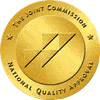Over the past several years, the rate at which articles describing, almost alternately, the benefits and risks of screening mammography, seems to have significantly increased. Some of the articles have shed more light on this valuable examination, better defining its role in a women’s health regimen. Others have only further muddied the waters surrounding the somewhat controversial issue of screening mammography. As with any screening examination, there are issues that need to be discussed and better understood by the clinicians and patients who choose to use this tool.
Overload of Mammography Articles
With the emphasis on having patients help direct their healthcare, clinicians and patients are trying to wade through the frequently bewildering and sometimes contentious series of articles on screening mammography. With the increased awareness and review of medical literature by patients, it is more important than ever editors and publications do a better job ensuring that only accurate information enters the debate.
Confusing Articles on Mammography Screening
One of the articles to muddy the waters, further increasing tension and adding to the confusion is the article in the British Medical Journal (BMJ). As noted in a rebuttal by the ACR, this article has major issues and the little information that is new or useful, is lost. Among the serious flaws noted by the ACR is, “The estimated 15 percent reduction in breast cancer deaths used in this study…has been discredited by a series of large randomized control trials and other data that prove the benefit is at least twice that.” Also noted is, “The U.S. government disavowed (the USPSTF recommendations) and barred insurance companies from using them in coverage decisions. A recent Hendrick and Helvie analysis, published in the American Journal of Roentgenology, showed that if USPSTF breast cancer screening guidelines were followed, approximately 6,500 additional women each year in the U.S. would die from breast cancer.
The article does raise some important points regarding false positives. The article discusses QALYs (quality adjusted life years) and, not completely inappropriately, includes the concerns patients have while waiting to follow-up what will later be determined to be a false positive. The idea of including this information in a holistic concept regarding screening mammography is presented in all the wrong ways and the bottom line message of the article seems to equate concern over a false positive study with unnecessary cancer deaths. After wading through the problems with the article, the last line of the conclusion, which should be followed and could be agreed upon by all, is lost, “… the meaning and implications of overdiagnosis and overtreatment need to be much better explained and communicated to any woman considering screening.”
Misleading Information
If the ACR claims are true, and I do not deny their veracity, the natural next question is, “Why and how did this get published?” Rather than ascribe ulterior motives I would ascribe this to bad journalism and bad academic writing; possibly in an effort to get an article on this topic published without much of anything new to say. The main problem is that some clinicians and some women are going to read this article, and in their confusion, they are not going to get appropriate screening. That is going to cost someone their real QALYs and possibly their own or their patients’ lives, and not just the poorly evaluated statistical QALYs noted in the BMJ article.
Editors Need to Put Patients First
Women’s health and indeed every patient’s health is more important than just getting another article into print. If the article is poorly researched, poorly written or poorly documented and it could harm or lead to the death of a patient directly or inadvertently, responsible editors should halt publication before such an article can get into the literature and waste serious investigator’s valuable time invalidating the information or conclusions. It can be argued that every reasonable opinion should be heard and I agree. However, if we put patients first and not the academic concern of silencing a viewpoint, we would see more responsible and better discussions in the future. More importantly, we could also save patient lives by decreasing the amount of confusing, poorly written and inaccurate material available to patients who are desperately trying to understand how they should help their clinician direct their health and medical care.
-Dr. Timothy Myers
Do you think publications have a responsibility to patients?





